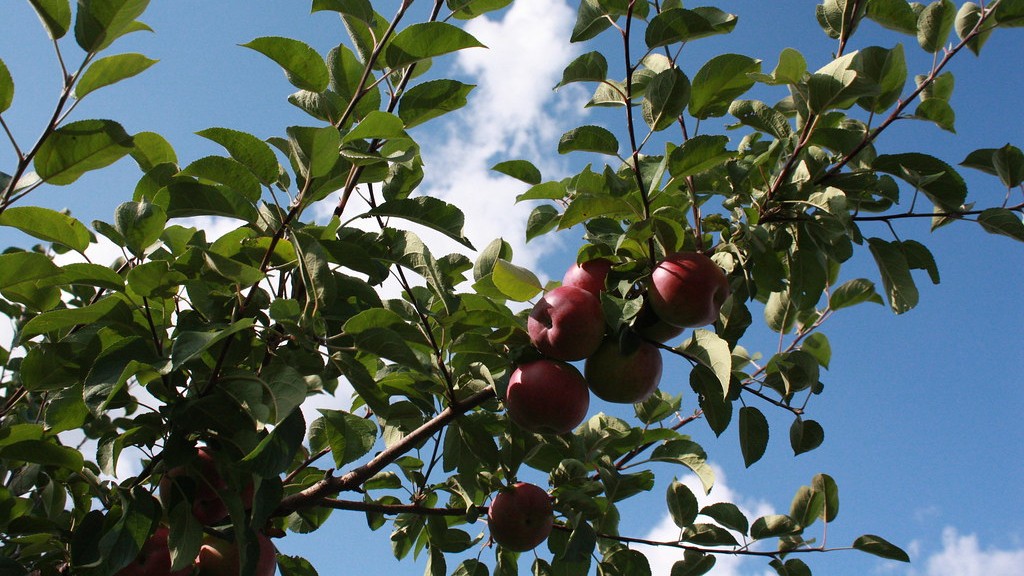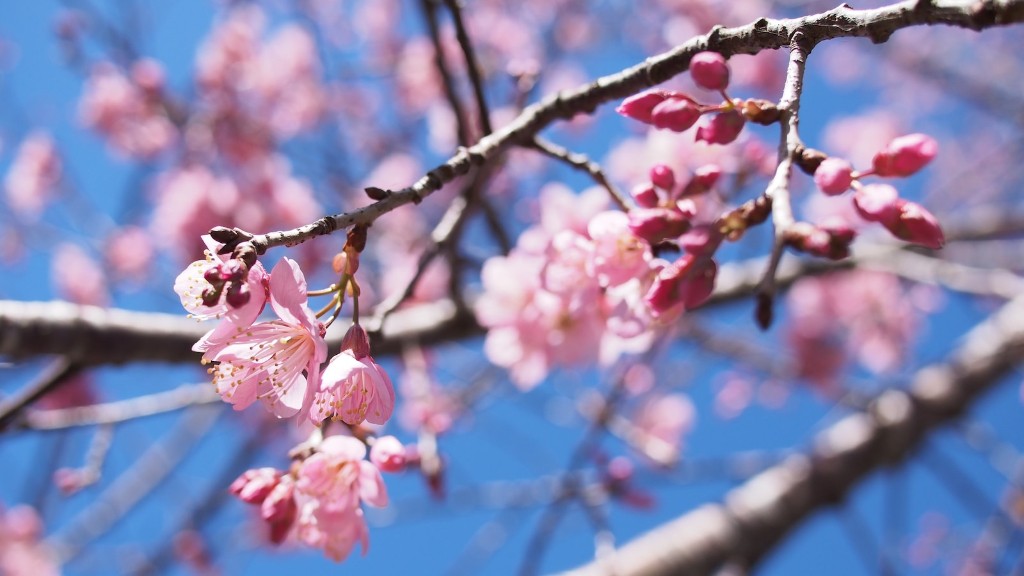When examining a tree leaf for brown spots, an apple tree owner should be aware that the problem can be caused by several different issues. Brown spots, which can range from light tan to dark brown, can be caused by drought stress, nutrient deficiency, fungal infection, insect damage or sun scalding. Determining the cause of the brown spots is key to successful repair of the tree.
Drought Stress
Dry soil is a common cause of brown spots on apple tree leaves. When the tree is not planted in a well-watered location, it is more prone to stress and can develop brown spots as a result. Affected leaves should be pruned, but unless the tree is given adequate water, the problem could recur. Providing the apple tree with proper irrigation can minimize the appearance of brown spots.
Nutrient Deficiency
Without certain essential nutrients, an apple tree may produce leaves with brown spots. Some common nutrient deficiencies that can cause brown spots include nitrogen and zinc. If this is the problem, applications of fertilizer can help. Apple tree owners should be sure to consult an agricultural cooperative to find fertilizers suited to their climate and soil type.
Fungal Infection
Fungal infections can lead to brown spots on apple tree leaves. Powdery mildew, scab, and black spot fungus all can cause brown spots. Controlling fungal infections usually requires a combination of preventative techniques, such as removing affected leaves, pruning dead wood, and applying fungicides. It’s essential to first identify the type of fungus before attempting to control it.
Insect Damage
Insects such as aphids, mites, and scale can cause brown spots on an apple tree leaves. The damage caused by these bugs can be prevented by applying insecticides, but it’s important to follow directions. Furthermore, practices that encourage natural predators are helpful, as beneficial bugs can help regulate pest populations.
Sun Scalding
Extreme heat or direct sunlight can also cause brown spots on apple tree leaves. The use of shade trees, windbreaks, and other forms of protection can help guard against sun-related damage. Pruning can also reduce the tree’s exposure to sunlight, and so improve its condition. Regularly monitoring an apple tree is the best way to determine if this is the cause of the brown spots.
Conclusion
Brown spots on apple tree leaves can be caused by a variety of issues, including drought stress, nutrient deficiency, fungal infection, insect damage, or sun scalding. Properly identifying the source of the brown spots is key in finding a solution. In most cases, this means giving the tree the right fertilizer, administering the correct insecticide, and providing the prescribed levels of water and sunlight.
Preventative Maintenance
Apple tree owners can employ a variety of techniques to prevent the development of brown spots, such as proper pruning, drainage, mulching, and fertilizing. All of these can help create an environment more conducive to apple tree health. Additionally, providing the tree with certain organic materials, such as fish emulsion or manure, can greatly reduce the frequency of brown spots on apple tree leaves.
Identifying Brown Spots
Identifying the cause of the brown spots on an apple tree is essential to providing effective treatment. Plant tissue tests can help determine if the plant lacks essential nutrients, while inspecting the affected leaves can often reveal evidence of insect or fungal damage. Any changes to the soil should be inspected carefully in order to prevent further damage.
Organic Solutions
Apple tree owners who prefer to avoid chemical solutions should explore the many solutions of organic, non-toxic gardening. Such alternatives include using water-soluble fertilizers, natural pest repellents, or even sprinkling plants with crushed eggshells to help keep pests at bay. Deep root irrigation can also help reduce the chances of stress, disease, or deficiency-related issues.
Insect Control
For those experiencing insect-related damage, the first step is to observe the tree for signs of buggy activity. Then, depending on the type of insect, the tree owner can select and apply the right organic, non-toxic insecticide. Insecticidal soaps and oils, neem oil, and volatile oils are often effective and minimize the chances of further toxins being added to the environment.


